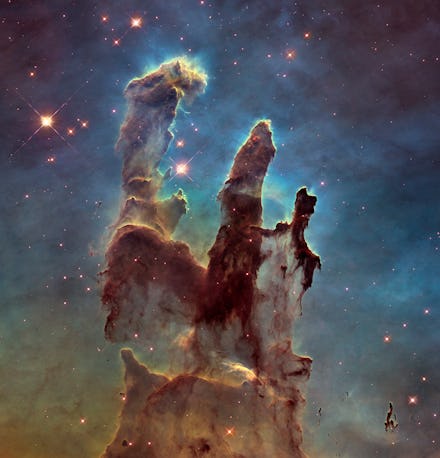What Does Space Really Look Like? These Images Reveal a Side of the Cosmos We Never See

If you take every picture you see from NASA at face value, then space is a sparkling, color-soaked universe.
But the problem with a lot of space images is that they're nothing like what we'd see if we climbed into a spaceship, flew out into the cosmos and peered out the window.
Sometimes images are color-enhanced to make certain features stick out, like this one of Mercury:
Or this psychedelic Pluto:
Sometimes the images are processed in wavelengths of light that are normally invisible to the human eye, like infrared:
Or X-ray and radio light:
Sometimes they're even a blend of visible light and light we wouldn't normally see, like this photo of Mercury:
But this isn't what space actually looks like to the naked eye.
The raw data from spacecraft usually comes back to Earth as unprocessed, black-and-white frames like these, or this photo from NASA's Mars Curiosity rover:
When astronomers process images, sometimes they'll run the raw images through filters to highlight the features that they're studying. Even if they use red, blue, and green filters of visible light, often they'll assign those colors to highlight things like oxygen, hydrogen or whatever they're studying in the image.
The resulting image is in color, but it looks nothing like what we'd see with our own eyes.
"We often use color as a tool, whether it is to enhance an object's detail or to visualize what ordinarily could never be seen by the human eye," NASA explained on the agency's Hubble site.
So what does space actually look like?
Well, we can get pretty close to true-color images if the goal is to create a visually accurate depiction.
Here are four examples of true-color images — or, at least, as close as we can get.
A galaxy called ESO 510-G13:
Pluto:
Mars:
Dwarf planet Ceres:
NASA's Mars Curiosity rover has a color camera on it, so we've gotten some pretty accurate photos of the surface of Mars:
Otherwise, most raw images aren't as colorful. "Creating color images out of the original black-and-white exposures is equal parts art and science," NASA wrote.
"We actually try to avoid the term 'true color' because nobody really knows precisely what the 'truth' is on Mars," Jim Bell, lead scientist for the Pancam color imaging system on the Mars Exploration Rovers, told Universe Today. "Colors change from moment to moment. It's a dynamic thing. We try not to draw the line that hard by saying, 'This is the truth!'"
The bottom line: We won't know what it really looks like until we go there and see it with our own eyes.
Read more: